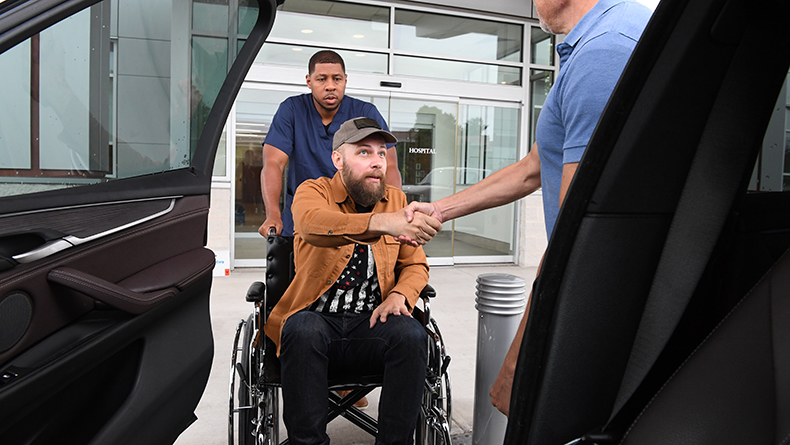AARP Hearing Center
What Consumers Should Know about Medicaid
By Lynda Flowers, Jean Accius, February 20, 2019 11:10 AM

Medicaid is a crucial program for millions of people. But not everyone understands who’s eligible and the benefits; moreover, the program continues to evolve. Here’s what you and all consumers should know.
Medicaid is the Nation’s Largest Public Health Insurance Program
Medicaid provides access to critical health and long-term services and supports (commonly called LTSS or long-term care) for nearly 68 million children, parents, low-income adults, older adults and people with disabilities. Medicaid covers prenatal care for millions of women so they can deliver healthy babies, as well as check-ups for more than three in four children in low-income families so they can get off to a healthy start in life.
The program is also a lifeline for about 15 percent of older adults, who may receive services not covered by Medicare; and close to half of all adults with self-care disabilities—needing help with activities of daily living such as bathing, dressing, and eating—who may receive long-term services and supports to help them stay in their homes and communities where they prefer to age.
Medicaid Benefits Vary by State
All Medicaid programs are required to provide certain services, like inpatient and outpatient hospital care, physician services, laboratory and x-ray services, home health care, rural health clinic services, and nursing home care for people ages 21 and older. States can choose to cover other benefits, like prescription drugs, dental and vision services, and home and community-based services like personal care (e.g., help with bathing, toileting, and dressing). Check with your local Medicaid office to see if what you need is covered.
Many States Have Alternative Names for their Medicaid Program
Many states use alternative names for their programs—it’s called Medi-Cal in California, HuskyHealth in Connecticut, and BadgerCare Plus in Wisconsin. To learn if your state’s program goes by another name, go to the Medicaid CHIP program names page or contact your state’s Department on Aging and Aging Disability center.
Medicaid Pays the Lion’s Share of Long-Term Services and Supports Costs
The vast majority of older adults and people with disabilities want to live and receive services in their homes and communities for as long as possible. Medicaid helps them do this by paying for the community-based services that people need. The program also pays for institutional care for those who need it. Learn about what your state pays for by visiting AARP’s Long-Term Services and Supports Scorecard.
Medicaid Helps Low-Income Medicare Beneficiaries
Millions of low-income Medicare beneficiaries qualify for Medicaid to help them with their Medicare cost sharing—like premiums and co-payments. To find out if you, a friend, or a loved one qualifies for this valuable help, contact your local State Health Insurance Assistance service. Find them here.
Millions Have Benefited From Recent Medicaid Expansions
Since 2014, states have been expanding Medicaid to cover millions of previously uninsured low-income adults. To date, 37 states (including the District of Columbia) have expanded Medicaid, giving almost 13 million low-income adults access to needed health care. Idaho, Nebraska, and Utah recently passed measures to expand their programs; close to 300,000 more people are expected to gain coverage as a result. With the recent election of new governors, expansions in Kansas, Maine, and Wisconsin may gain traction. Watch your local news to learn what’s going on in your state.
New Requirements Pose a Threat to the Program
Some states are implementing new policies—like requiring that people work or pay premiums to get or keep Medicaid benefits. Those who don’t or can’t comply could lose Medicaid coverage. Although the vast majority of adults with Medicaid either work (60 percent) or are in a family with at least one worker (78 percent), those who are not working likely have significant health problems or are caring for a family member. Because of these policies, people could lose Medicaid coverage, and along with it, health care and LTSS they need. In Arkansas, the first state to implement a work requirement, nearly 17,000 people have lost coverage. Keep on top of whether your state has, or is considering new requirements by checking out this handy Medicaid Waiver Tracker. The site is regularly updated, so check it frequently.
Medicaid is a Popular Program
Consumers overwhelmingly support Medicaid, with six in ten saying that the program is important to them and their families. Policymakers should be sure to listen.

Lynda Flowers is a senior strategic policy advisor at the AARP Public Policy Institute. Her areas of expertise include Medicaid, social determinants of health (including social isolation), oral health, and health prevention/promotion.

Jean Accius is senior vice president for AARP Thought Leadership and International Affairs. His areas of expertise include aging, caregiving and long-term care policy.































































